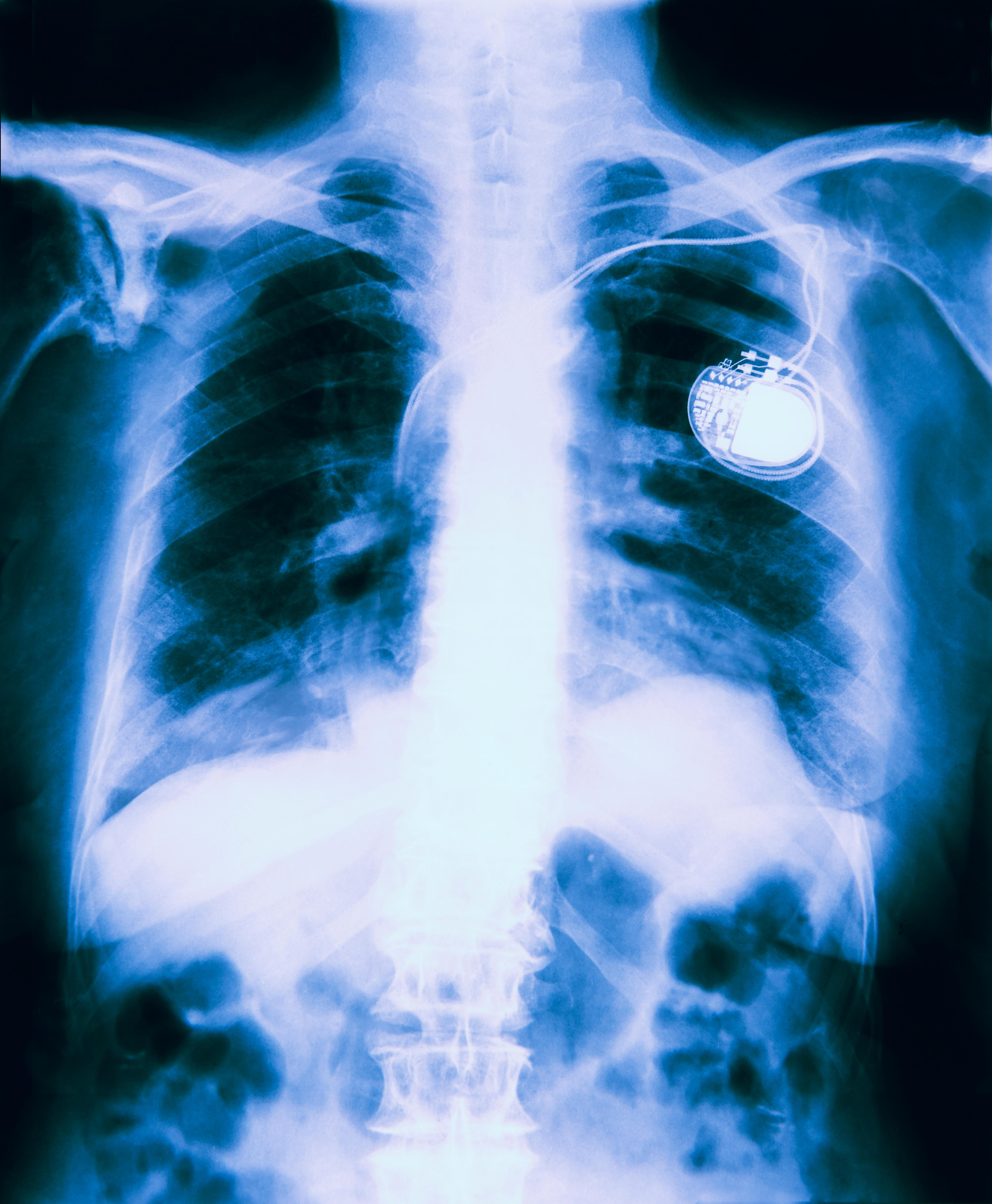How scientists are using pork chops to design a better pacemaker
New technology could improve wireless communications from implanted medical devices


If you ran into electrical engineer Andrew Singer in the grocery store recently, you may not have given his shopping basket — filled with a few beef livers and some pork chops — much notice. But Singer was buying that meat for his lab, not for his plate. Back at the University of Illinois at Urbana–Champaign, he hung the pork chop and beef liver on hooks, pointed ultrasound devices in their direction, and proved that data can be wirelessly transmitted through flesh as quickly as Netflix streams movies.
The experiment was called Mbps Experimental Acoustic Through-Tissue Communications, or MEAT-COMMS for short. Despite the lighthearted acronym, the underlying technology could one day transform health care by making it easier for health practitioners to communicate with implanted medical devices. (Yes, what works on a cut of pork will likely work on people.) Doctors could download large amounts of historical data or update device firmware as easily — and as rapidly — as today's cell phone users watch high-def video or stream music.
Singer, a professor of electrical and computer engineering with a specialty in underwater communications, collaborated on the project with Michael L. Oelze, an associate professor of electrical and computer engineering with a much different focus: the use of ultrasound for biomedical applications. The two brought their seemingly disparate disciplines together in an attempt to see if bodies could one day be turned into data transmitters.
The Week
Escape your echo chamber. Get the facts behind the news, plus analysis from multiple perspectives.

Sign up for The Week's Free Newsletters
From our morning news briefing to a weekly Good News Newsletter, get the best of The Week delivered directly to your inbox.
From our morning news briefing to a weekly Good News Newsletter, get the best of The Week delivered directly to your inbox.
"Wireless technology is pervasive," says Singer. "My daughter who's 16 can't imagine a world where you can't push data from phone to phone to laptop. But to do that through a body is a much bigger challenge." That's because human bodies are, as Singer puts it, "big bags of salt water." When electromagnetic waves like those used in Wi-Fi routers pass through saline, they dissipate, creating currents that generate heat. That's harmless in small amounts, but to pass large amounts of data through human flesh, significant exposure to such waves would be needed — exposure that could all but cook a human from the inside.
Ultrasound — high-frequency sound waves that cannot be heard by humans — is a different story. The human body can tolerate a much higher amount of ultrasound than electromagnetic waves without sustaining tissue damage. Oelze and Singer wondered if those waves could be the key to transmitting greater amounts of data from implanted devices.
Some implanted devices, like pacemakers, are already capable of transmitting wireless data using radio waves, but at the levels they'd need to transmit large amounts of data, they'd harm human bodies. Interference is also an issue, and extracting data from a medical device often requires wearing a second device that talks to the first, or having the device itself removed and replaced. That's unacceptable, says Singer. "It should be as easy to communicate with the implanted devices as it is for you to put software into your cell phone or onto your Nest thermostat."
During the experiment, the team put a focused transducer that converts electricity into ultrasound on either side of the meat and hit it with ultrasonic waves transmitting data at rates of five, ten, 15, 20, and 30 megabytes per second. It worked: They achieved real-time, streaming-video-rate speeds through both pieces of flesh. It may sound simple, but had never been tried before — thus far, even ultrasound has been used for experiments only with much slower data speeds.
A free daily email with the biggest news stories of the day – and the best features from TheWeek.com
Though both scientists admit there's not much chance of binge watching Netflix via the human body anytime soon, they think their experiment could lay the foundation for what Singer calls "a whole new realm of possibility." Not only could the breakthrough lead to devices that are easy to update, troubleshoot, and read but it could also open the door to new medical technologies. One day, says Oelze, patients could swallow pills equipped with cameras and transducers that stream images from their digestive tract, allowing real-time diagnosis and even surgeries controlled by remote doctors. Or the technology could be used to make multiple internal devices communicate with one another.
"The way that we send data through our body right now is either chemically or through our central nervous system in a sort of electrochemical process," says Singer. "But maybe we need to send more data to other systems."
Next, the scientists will work to increase the speeds to as high as a gigabit per second. Eventually, they hope to develop acoustic systems that can transmit data at those rates through bone and layers of fat and muscle, then test them in animals and one day humans. Though they have no immediate plans to commercialize MEAT-COMMS, they hope to work with other researchers to figure out how the technology could best be deployed.
"This absolutely could create the information superhighway [of the] internal body," Singer says — a highway paved with pork chops and beef livers.
Erin Blakemore is a journalist from Boulder, Colorado. Her work has appeared in The Washington Post, Time, Smithsonian.com, mental_floss, Popular Science and more.
-
 Russia’s ‘weird’ campaign to boost its birth rate
Russia’s ‘weird’ campaign to boost its birth rateUnder the Radar Demographic crisis spurs lawmakers to take increasingly desperate measures
-
 Could smaller cars bring down vehicle prices?
Could smaller cars bring down vehicle prices?Today’s Big Question Trump seems to think so, but experts aren’t so sure
-
 2025’s most notable new albums
2025’s most notable new albumsThe Week Recommends These were some of the finest releases of the past year
